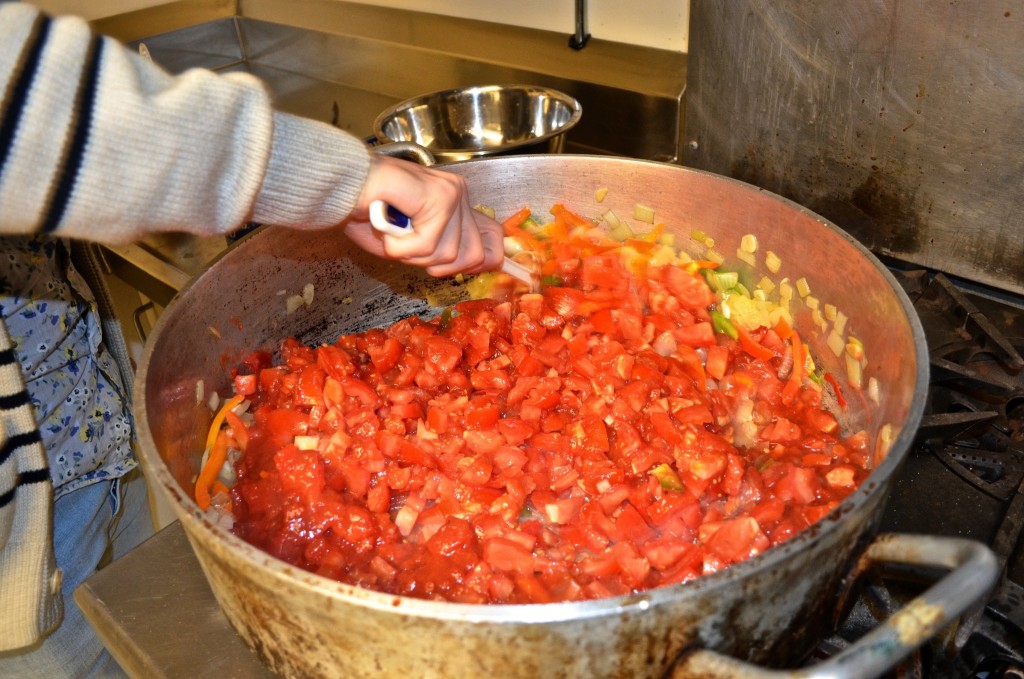Embark on a culinary adventure with this authentic shakshuka recipe, a vibrant and flavorful dish that has captivated taste buds for centuries. Originating in North Africa, shakshuka has become a beloved breakfast and brunch staple, combining the richness of tomatoes, the warmth of spices, and the comforting embrace of poached eggs.
This comprehensive guide will provide you with the essential ingredients, step-by-step preparation instructions, and helpful tips to create an authentic shakshuka that will tantalize your senses and leave you craving for more.
Ingredients
Authentic shakshuka is a flavorful and versatile dish that requires a combination of fresh and aromatic ingredients. The key ingredients include:
- Tomatoes: 6-8 ripe tomatoes, peeled and diced (or 2 cans of diced tomatoes)
- Olive oil: 1/4 cup
- Onion: 1 large onion, chopped
- Garlic: 3-4 cloves, minced
- Bell peppers: 1 green bell pepper and 1 red bell pepper, chopped (optional)
- Cumin: 1 teaspoon
- Paprika: 1 teaspoon
- Cayenne pepper: 1/4 teaspoon (optional)
- Eggs: 6-8 large eggs
- Salt and pepper: to taste
- Fresh cilantro or parsley: for garnish (optional)
Variations and optional ingredients:
- Spices: Add additional spices like coriander, turmeric, or harissa for a more complex flavor.
- Vegetables: Include other vegetables like zucchini, eggplant, or mushrooms for a heartier dish.
- Cheese: Top the shakshuka with crumbled feta cheese or grated Parmesan cheese for extra richness.
- Bread: Serve the shakshuka with crusty bread or pita bread for dipping.
Equipment

Preparing shakshuka requires a few essential cookware items and utensils to ensure a successful and convenient cooking experience.
The most crucial piece of equipment is a skillet or pan. Choose a large skillet or pan, ideally between 10 to 12 inches in diameter, that is oven-safe. This size provides ample space for the eggs to cook evenly and the sauce to simmer without overcrowding.
Essential Tools
- Slotted spoon: This utensil is perfect for gently lifting and draining the eggs from the sauce without breaking them.
- Heatproof spatula: A heatproof spatula is essential for flipping and stirring the shakshuka without damaging the pan or the eggs.
Preparation
Shakshuka’s vibrant flavors come alive through a meticulous preparation process that involves carefully handling both the vegetables and the tantalizing sauce.
Vegetables
Begin by chopping the bell peppers and onions into bite-sized pieces. Sauté them in olive oil over medium heat until they soften and become fragrant, about 5-7 minutes. This step enhances their sweetness and creates a flavorful base for the dish.
Sauce
To create the rich tomato sauce, combine diced tomatoes, garlic, chili peppers, and a blend of spices. Simmer over low heat for 15-20 minutes, stirring occasionally. The sauce should thicken slightly and develop a vibrant red color, infusing the dish with a tantalizing aroma.
Eggs
Eggs are the centerpiece of shakshuka, adding richness and protein to the dish. There are various techniques for cooking eggs in shakshuka, each resulting in a unique texture and flavor.
Cooking Techniques
Poaching eggs in the tomato sauce is a popular method, creating soft, tender yolks and firm whites. Alternatively, baking the eggs in the skillet produces a more custard-like texture. To achieve the desired doneness, cook the eggs until the whites are set but the yolks are still slightly runny.
Placement and Timing
The optimal time to add the eggs is when the tomato sauce has thickened and is bubbling gently. Carefully crack the eggs directly into the skillet, spacing them evenly. The cooking time will vary depending on the desired doneness and the heat level.
Use a spatula to gently adjust the eggs as they cook, ensuring even distribution of the sauce.
Garnish and Presentation
Shakshuka’s presentation is as important as its flavor. Garnishes and accompaniments elevate the dish’s visual appeal and enhance the dining experience.
Herbs and Spices
Fresh herbs and spices provide a vibrant and aromatic touch to shakshuka. Commonly used herbs include cilantro, parsley, and mint, while paprika, cumin, and cayenne pepper add warmth and depth of flavor.
Sprinkle chopped herbs over the shakshuka just before serving. Arrange the spices in small piles around the dish, creating a visually appealing and flavorful presentation.
Bread and Dips
Shakshuka is traditionally served with bread or dips for dipping. Crusty bread, such as pita or sourdough, provides a perfect accompaniment to soak up the flavorful sauce and runny eggs.
Dips like hummus, tahini, or labneh complement the richness of shakshuka, adding creaminess and extra depth of flavor. Offer a variety of dips to cater to different preferences.
Closure

As you savor the last bite of your homemade shakshuka, take a moment to appreciate the culinary journey you have embarked on. This dish is not merely a meal; it is a testament to the vibrant flavors and rich traditions of the Middle East.
Whether you enjoy it as a hearty breakfast, a leisurely brunch, or a comforting dinner, may this authentic shakshuka recipe bring joy and nourishment to your table for many years to come.
FAQs
Can I use canned tomatoes instead of fresh tomatoes?
Yes, you can use canned tomatoes as a convenient alternative to fresh tomatoes. Choose high-quality canned tomatoes with no added salt or sugar for the best flavor.
What is the best way to cook the eggs?
The traditional method is to poach the eggs directly in the shakshuka sauce. However, you can also bake the shakshuka in the oven for a firmer egg white.
What are some variations to the classic shakshuka recipe?
You can add various vegetables to your shakshuka, such as bell peppers, zucchini, or spinach. You can also experiment with different spices and herbs, such as cumin, paprika, or harissa.
How can I store leftover shakshuka?
Leftover shakshuka can be stored in an airtight container in the refrigerator for up to 3 days. Reheat it gently over medium heat before serving.
What is the best way to serve shakshuka?
Traditionally, shakshuka is served with warm pita bread or crusty bread. You can also serve it with hummus, yogurt, or a simple green salad.
